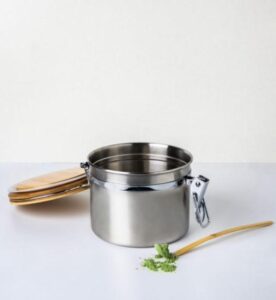
When visiting a café, many tea lovers often enjoy a matcha latte as their go-to drink. However, frequent drinkers may start to notice inconsistencies in the flavor—sometimes it’s rich and fragrant, while other times it’s more astringent, even when using the same matcha. So, why does this happen? One key factor is the barista’s technique. If the measurements or water temperature aren’t precisely controlled, it can result in noticeable changes in the matcha’s taste.
Proper Matcha Storage
Storing matcha powder correctly is critical to preserving its flavor and quality. Many people store matcha in the kitchen for convenience, but this is far from ideal. Kitchens are full of heat, humidity, and strong food odors that can cause matcha to deteriorate quickly, fading its color and diminishing its aroma.
In some cafés, matcha may be left on the counter for easy access. While this is fine if it’s used quickly, long-term storage in such conditions—especially near windows or doors exposed to fluctuating temperatures—can degrade the quality of matcha. For better preservation, matcha should be stored in the refrigerator. However, this also comes with its challenges, like the risk of food odors seeping into the matcha and moisture buildup when removing it from the fridge.
A simple solution is to store matcha in an airtight zip-lock bag. When taking it out of the refrigerator, let the matcha adjust to room temperature for a few hours before opening, which helps to maintain its quality.
Choosing the Right Matcha Container
The container used for storing matcha also plays an important role in maintaining its freshness. While clear jars may look appealing and showcase the bright green color of matcha, exposure to light can cause the tea to fade and lose its aroma. If you must use a clear jar, ensure it’s stored in a dark place and that the matcha will be used within a day.
Another important factor is the jar’s size. Using large jars that are frequently opened allows more air to come in contact with the matcha, which can cause its aroma to diminish. It’s best to portion matcha into smaller jars that will be used up within a few days, ensuring the tea’s quality remains intact.
Serving Containers and Their Impact on Experience
The type of container used to serve tea doesn’t just influence the appearance—it has a direct impact on the drinking experience. The design and material of a cup can enhance the ambiance of a menu, creating a luxurious, relaxed, or casual atmosphere depending on what’s chosen. But there’s more than just the aesthetics.
For instance:
- Straws vs. Glasses: While straws are convenient, they limit the amount of tea that flows into the mouth compared to drinking directly from a glass, which allows for a fuller experience.
- Rim Thickness: A thin rim allows the tea to flow quickly and precisely into the mouth, ideal for complex flavors. A thicker rim slows the flow, offering a softer, more rounded drinking experience—particularly suited for milk-based drinks.
- Container Thickness: Thin containers may feel elegant but don’t retain heat well. In contrast, thicker containers keep beverages at their optimal temperature longer, though they must be pre-warmed or cooled to avoid altering the drink.
- Mouth Width: A small-mouthed glass encourages slow sipping, while a wide-mouthed glass allows for faster, more refreshing drinking. Glasses with flared mouths can guide the liquid more easily than straight or curved ones.
- Material Matters: Whether the container is made of clay, ceramic, or metal, the texture and feel affect the overall drinking experience.
These factors all contribute to a well-rounded and enjoyable tea experience. The concepts presented here offer a foundation for managing tea preparation and serving. While not strict rules, they provide insights that can inspire new ideas in creating and enhancing tea menus. I hope this article sparks creativity and thoughtful approaches to your next cup of tea.

